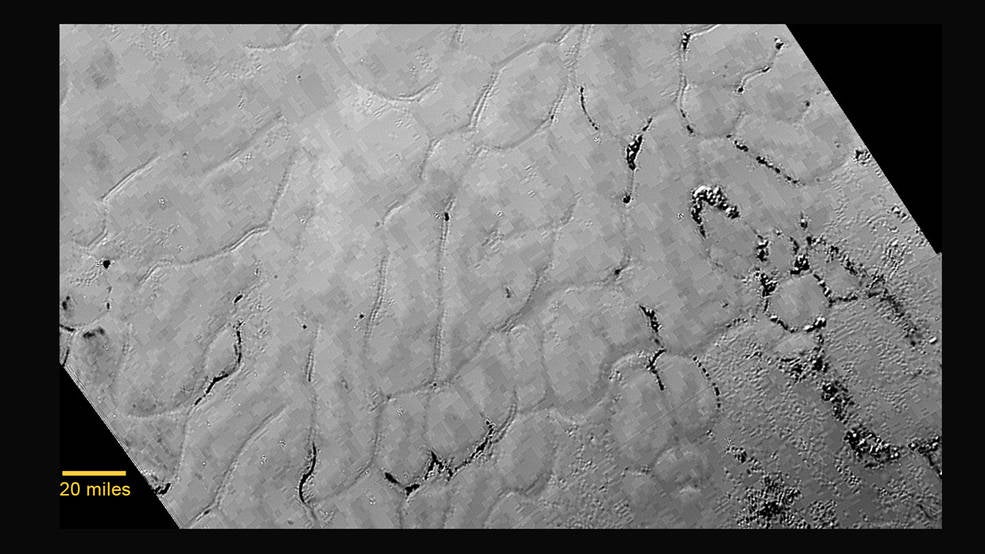New Horizons: Pluto's vast, craterless plains 'exceed all expectations' in latest image
Scientists informally name the area Sputnik Plain, after Earth’s first artificial satellite

Nasa’s ground-breaking New Horizons spacecraft has discovered vast, craterless plains on Pluto which “exceeds all expectations”.
A newly released image shows a geologically very young plains - believed to be no more than 100 million years old - which lie in the centre of Pluto’s heart-shaped mark, north of its icy mountains.
The Long Range Reconaissance Image on-board the New Horizons aircraft captured the image from a distance of 77,000km (48,000 miles) from Pluto's surface.
Scientists have informally named the area Sputnik Plain, after Earth’s first artificial satellite, and believe that geological processes may still be shaping the relatively youthful region.
The surface of the plains appears similar to frozen mud cracks on Earth, and are comprised of irregularly-shaped segments measuring around 20km (12miles) across. Surrounding the area is what appears to be shallow troughs, some of which are filled with darker material, while others are surrounded by clusters of hills which rise above the surrounding terrain.
In other areas, a process called sublimation appears to have caused fields of small pits to form. This happens when ice turns directly from a solid substance to a gas, similarly to how dry ice forms on Earth.
Experts believe the segments were formed in one of two ways. Some believe they were formed after surface materials contracted, similarly to how mud dries. Others argue that their creation is comparable to how wax rises in a lava lamp, as part of a process called convection.
Meanwhile, the dark streaks show in the image were likely formed by winds blowing across Pluto's surface.
“This terrain is not easy to explain,” said Jeff Moore, leader of the New Horizons Geology, Geophysics and Imaging Team (GGI) at NASA’s Ames Research Center in Moffett Field, California. “The discovery of vast, craterless, very young plains on Pluto exceeds all pre-flyby expectations.”
Join our commenting forum
Join thought-provoking conversations, follow other Independent readers and see their replies
Comments
Bookmark popover
Removed from bookmarks